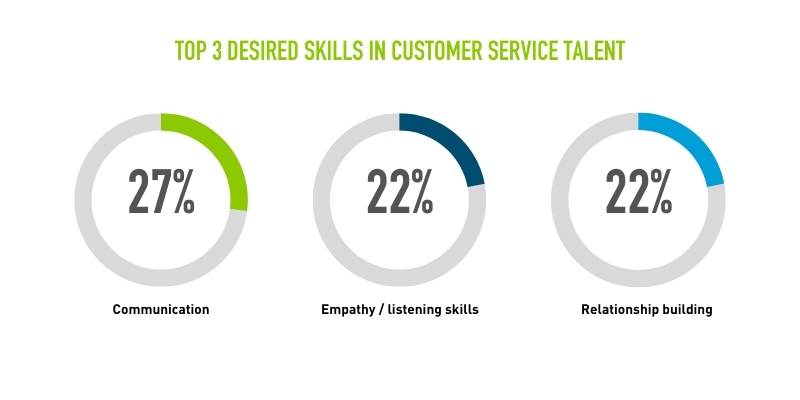In today’s tumultuous labor market, where some industries are slowing down, customer service hiring is still challenging across financial services, utilities, hospitality and retail. Organizations in these sectors often find themselves competing on customer experience, which is being impacted by the lack of staff.
A consumer survey from PwC shows that the four most important factors for an exceptional customer experience are speed, convenience, knowledgeable help and friendly service. The key to excelling in these factors is happy, engaged employees. Organizations with highly engaged workforces are 21% more productive, outperform competitors by 147% and have customer loyalty rates 233% higher than companies without engaged employees.
How can companies achieve this kind of success when they are struggling to fill their customer-facing vacancies? Talent acquisition leaders are getting creative to recruit and retain customer service and call center talent. Here are three trends in how companies are adjusting their approach to hiring and engaging a customer-focused workforce.
Trend 1: Hiring for Potential
As customer expectations have changed, so have the skills needed for top customer service talent. We recently conducted a poll in which talent leaders indicated that soft skills related to emotional intelligence are highly sought after.

We’ve worked with several of our clients to implement a culture-centric approach for attracting talent. Instead of assessing candidates based on previous work experience, we advise evaluating based on whether they possess the right skills, values and behaviors to be successful in the role. We’re reimagining interviews and assessments to be more focused on soft skills and purpose as we help talent leaders and hiring managers embrace candidates coming from outside of their industry.
Trend 2: Expanding Talent Pools
With job openings outnumbering job seekers, organizations across sectors find themselves getting creative as they try to expand their talent pool. For some, this means looking into new talent audiences, like underrepresented group or military veterans, and putting programs in place such as apprenticeships to future-proof their talent pipeline.
For many companies, the growth of remote work means that they’re looking outside of their physical call center locations to candidates across the country and even expanding to new countries. This requires an adjustment to your talent acquisition strategy to ensure your employer brand and recruitment processes are ready to handle dispersed talent.
Trend 3: Adapting to Remote Work
Remote work is impacting more than just where talent comes from, it also affects how organizations onboard and engage their staff. As some countries are experiencing a cost-of-living crisis, customer service representatives are fielding queries from vulnerable customers which can be especially draining. Talent leaders are getting creative in how they connect with staff to ensure a sense of belonging and wellness—regardless of where the employee is working.
Some contact centers have even adjusted their operational structure to work in “pods” which ensures agents—both in the office and remote—get the support they need to solve customer queries efficiently. Before, managers and team leads could walk around the call center floor and see when agents looked stressed. Remote working has made it harder to monitor employee wellbeing. Customer-focused leaders are investing in employee wellbeing, from training managers to catch the signs of burnout to offering wellbeing support programs.
These are just a few of the labor market trends that are impacting how companies hire and engage talent. Clearly, organizations are finding creative and bold ways to invest in their employees to maintain a resilient and customer-focused workforce.




